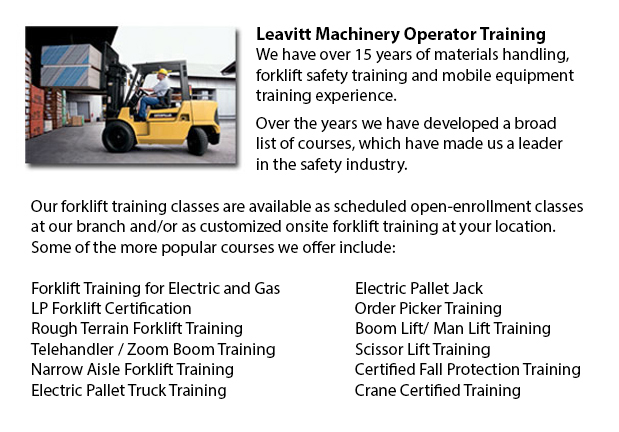
Aerial Lift Training Sudbury - Aerial forklifts can be used to accomplish certain unique tasks performed in hard to reach aerial spaces. Some of the duties associated with this kind of lift include performing daily upkeep on buildings with prominent ceilings, repairing telephone and power lines, lifting heavy shelving units, and trimming tree branches. A ladder might also be used for some of the aforementioned jobs, although aerial platform lifts provide more security and strength when correctly used.
There are a number of different versions of aerial lifts existing, each being capable of performing moderately different jobs. Painters will often use a scissor lift platform, which is able to be used to reach the 2nd story of buildings. The scissor aerial platform lifts use criss-cross braces to stretch out and enlarge upwards. There is a platform attached to the top of the braces that rises simultaneously as the criss-cross braces elevate.
Container trucks and cherry pickers are another type of aerial hoist. They possess a bucket platform on top of a long arm. As this arm unfolds, the attached platform rises. Lift trucks use a pronged arm that rises upwards as the handle is moved. Boom lifts have a hydraulic arm that extends outward and lifts the platform. All of these aerial hoists require special training to operate.
Training programs presented through Occupational Safety & Health Association, acknowledged also as OSHA, deal with safety steps, machine operation, repair and inspection and device cargo capacities. Successful completion of these training programs earns a special certified certificate. Only properly qualified individuals who have OSHA operating licenses should drive aerial platform lifts. The Occupational Safety & Health Organization has formed rules to maintain safety and prevent injury while using aerial lifts. Common sense rules such as not utilizing this machine to give rides and making sure all tires on aerial platform lifts are braced in order to hinder machine tipping are referred to within the rules.
Sadly, data show that more than 20 operators die each year when working with aerial platform lifts and 8% of those are commercial painters. Most of these incidents are due to inappropriate tire bracing and the hoist falling over; for that reason several of these deaths had been preventable. Operators should make certain that all wheels are locked and braces as a critical safety precaution to prevent the machine from toppling over.
Other rules include marking the encircling area of the machine in a visible way to protect passers-by and to guarantee they do not come too close to the operating machine. It is vital to ensure that there are also 10 feet of clearance among any electrical cables and the aerial lift. Operators of this apparatus are also highly recommended to always wear the proper security harness while up in the air.
-
Terex Forklift
Terex Forklift Forklift Training - Terex Forklifts takes immense pleasure in producing quality equipment that helps improve their customers' efficiency while standing by their mission to offer a cost effective yet reliable product line. Through sever... More -
Pallet Lifts
Pallet Lifts Training Sudbury - A pallet lift is a device built in particular for moving pallets of varying weights and sizes. They may be utilized in conjunction with cranes, platform lifts and other heavy duty machinery as an attachment piece or to... More -
Scissor Lifts
Scissor Lift Training Sudbury - The scissor lift or platform lift, is a mechanical industrial lift that may be tailored to be utilized in retail, wholesale, manufacturing and production settings. Mechanized scissor lifts have been used chiefly within... More -
Komatsu Forklift
Komatsu Forklift Training Sudbury - Komatsu Forklift U.S.A. Inc. has a very good reputation for building reliable and robust lift trucks. Komatsu is recognized around the globe as a company with a prosperous heritage while maintaining an excellent st... More -
Pneumatic Forklifts
Pneumatic Forklifts Training Sudbury - Widely utilized in shipping plants, the pneumatic forklift or pallet vehicle, may be utilized to transfer resources that are positioned on top of pallets. A pneumatic forklift typically has a set of metal blades... More

Forklift Certification Sudbury
TOLL FREE: 1-888-254-6157
Sudbury, Ontario
forkliftcertificationsudbury.com
Email Us
About Us


